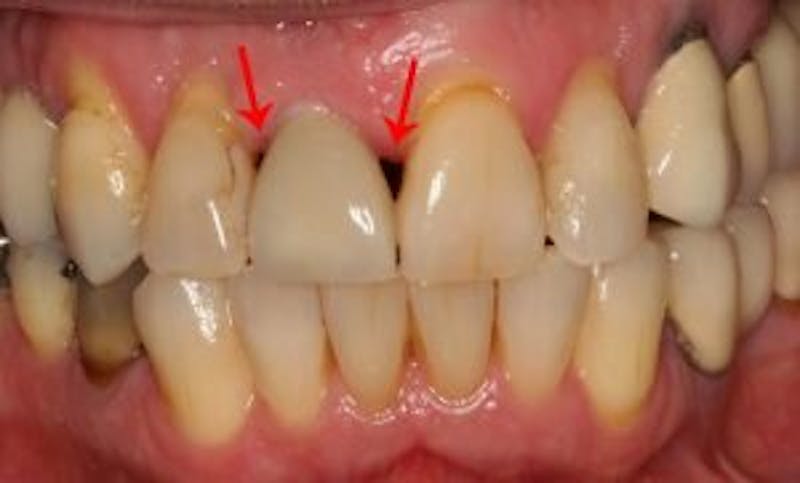
Lets say you see your dentist every six months, you floss every day and have never had a cavity. Your teeth are perfectly aligned from past orthodontic work, and you never feel self-conscious smiling in a photo. And then, one day, you notice a black spot that looks like a poppy seed stuck in your teeth. No amount of picking gets it out, though. Smiling causes a bit of discomfort. The spot may even get bigger! This may be a sign of a common dental condition known as "black hole disease.
"What, exactly, is black hole or black triangle disease? Put simply; it's a space that opens up where your teeth and gums connect, exposing the root to the air and causing an unsightly black spot to appear. There are numerous reasons this can occur. Your simple anatomy can be a culprit. Bulbous or triangular teeth may have too much space between each other, creating the perfect conditions where black holes thrive instead of normal, healthy, pink gums.
Another cause may be orthodontic work. While braces gave you that beautiful smile you are so proud of, they also moved your teeth around in unnatural ways. Braces may cause your teeth to be much lower than they are supposed to be, once again creating a space between your tooth and the gum.
If you've had a history of gum disease, you've probably had some sort of gum therapy to help treat it. Again, while the treatment might have solved the problem, it, unfortunately, might have created another one. Gum therapy can create space between your teeth and space between a tooth and its root and cause black triangles. Smiling causes air to fill these spaces, creating discomfort and making you self-conscious about your smile.
Long story short, black holes love space between your teeth.
How to Fix Black Hole Disease

Unfortunately, once black hole disease has progressed past a certain point, there isn't much to do about it. Invisalign braces or reshaping your teeth may help, but that process takes at least six months and isn't guaranteed to solve the problem completely. Don't worry, though, the problem isn't impossible to fix. There is actually a quick and straightforward way to cover up those holes and get your smile back: crowns.
A dental crown, also known as a dental cap, is a dental restoration that completely caps a tooth. They are generally needed when large cavities threaten a too. Crowns improve the appearance of broken down teeth and prevent cracks in brittle teeth. How, then, can a crown improve black hole disease? Simple: they take up space.
When a dentist applies a crown to a tooth, they have a bit of artistic freedom. Dentists have many tricks of the trade to change the shape and contour of the tooth using a crown. Clever use of contouring and shaping of a crown can drastically change the appearance of a tooth, making teeth look straighter or closer together. Not only do they cover up cavities and improve your smile, but they also treat those annoying black triangles!
Through the competent and judicious use of crowns, dentists can fill up spaces where black holes can appear. Less space, less black holes! Crowns can prevent future issues by taking up space. Crowns will cover them up and give you back your beautiful smile!
If you or a loved one is seeing black holes appear in your gum line, don't wait until it gets worse! Talk to your dentist now about covering them up with crowns, and get back to living your life quickly and easily!
